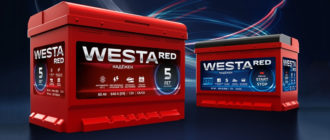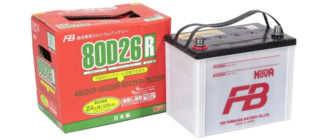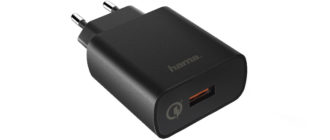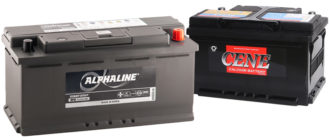Almost all car owners were faced with such a nuisance as a battery discharge during a short downtime, for example, overnight. The battery is not always the cause of such problems. The condition of the car and even weather conditions can also affect this. Although it is worth noting that in most cases the battery is to blame.
Content
Battery Issues
Current leak
For cars equipped with security systems and other consumers of electricity, the memory of which is not non-volatile (for example, audio systems), spontaneous leakage of current is normal. In addition, insignificant losses can occur due to the formation of current-carrying “bridges” formed from water and dirt between the terminals of the connection blocks.
The question is how big is the leak. For domestic cars, its maximum indicator should not exceed 0.075 - 0.08 A, for foreign cars - two times lower. For clarity, a current of ≈1.75 A flows in the circuit of the switched-on stop lamp or direction indicator, the power of which is 21 watts. That is, if the leakage is normal, it cannot drain the battery even after several days of inactivity.

The leakage current should be measured with a milliammeter connected between the “positive” terminal disconnected from the battery and the corresponding (positive) terminal.
In order to avoid excessive current flowing through the device at the moment of operation of electric locks, temporarily shunt it with a piece of wire!
Short between the plates
Short circuits between positive and negative plates occur for the following reasons:
- Separator damage
- The formation of jumpers (dendrites) from pollution
- Sludge accumulation at the bottom of the battery
It can be closed by several cans or one - the battery is in any case unsuitable for operation. It is possible to identify the fact of a short circuit inside the battery with the help of a load plug - when connecting its additional resistance, the closed banks “boil”, and the voltage at the battery terminals drops below 9 V.
A closed battery cannot be restored.
Plate Sulphation
During the course of the discharge flow along the current circuit, the salts formed as a result of the reaction of lead and sulfuric acid — sulfates — form plaque on the plates. Partial sulfation is a completely natural phenomenon. When the battery is charged, reverse reactions occur, as a result of which the sulfate particles decay and both the platinum material and their coating are restored, as well as the electrolyte density.

With a deep discharge, sulfates form such a dense crust that it prevents the interaction of ions with the material of the plates. As a result, it becomes impossible both to charge the battery and to give it electricity.
Sometimes, until the entire surface of the plates is covered with a sulfate crust, it is possible to reanimate the battery in several charge / discharge cycles. Such training cycles can also be carried out for preventive purposes, without waiting for the battery to "sit down" for no reason in one day.
It is not possible to clean the plates mechanically, therefore, batteries that have undergone a deep discharge, in most cases go to waste.To prevent this from happening, you should not “squeeze” the battery when you try to start it by rotating the crankshaft for a long time with the starter - the battery that has ever been set to “zero” simply will not accept charging.
Low electrolyte
The electrolyte level must be such that between its surface and the upper edges of the plates there is a distance of 15 - 20 mm.
A low level indicates that the water contained in the electrolyte has partially boiled away. As a result, the concentration of sulfuric acid in this case increases, which causes active corrosion of the plates.
But adding distilled water without checking the density of the electrolyte is allowed only in hot weather - otherwise, too diluted, it can destroy the battery case in frost. Insufficient density can be restored by adding a correction solution with a density of 1.4 g / cm3sold in stores.
Do not allow dirt to enter the openings in the battery case when measuring the density and topping up the electrolyte - it will cause a discharge current between the plates!
Plate shedding
Plate coating is also involved in chemical reactions in charge / discharge processes and its shedding reduces the battery's energy output. In addition, crumbled particles cause a current leakage inside the power source.

As a result, both the capacity and the starting current of the battery fall. The main reasons for shedding plates:
- Excessive voltage and charging current. The voltage should not exceed 14.4 V, and the charging current should be 10% of capacity. That is, a battery with a capacity of 75 A / h should be charged with a current of 7.5 A.
- Vibration and shock perceived by the battery case due to poor attachment to the car.
Plates cannot be replaced - the case of a modern battery is non-separable.
Terminal oxidation
The terminals made of iron alloys suffer the most from oxidation - they are most susceptible to corrosion. Over time, the terminal contacts with the battery terminals and wires are broken, which prevents both the full charge of the battery and the supply of consumers to it. To protect the terminals from oxidation, a thin layer of grease is applied to their surface.
Lead terminals do not oxidize, but over time their "grip" weakens - the ductile metal is easily deformed. Such terminals can be restored by increasing the gaps in their “locks” with a file.
Low inrush current
When buying a battery, you need to pay attention not only to its capacity, expressed in ampere hours, but also to the value of the starting current indicated on the sticker on the case along with the rest of the data. An improperly selected battery, even if it is not discharged, will not allow the starter to develop the required power when scrolling the engine crankshaft.
Particular attention in this regard must be paid when choosing a battery for a car with a diesel engine - a higher compression in the diesel cylinders has a greater resistance to scrolling.

In general, purchase a new battery in accordance with the recommendations of the vehicle manufacturer. A battery having larger than necessary capacitance and discharge current values will not be charged at 100% during operation - it simply does not allow the power of the current generated by the generator. Constant "undercharging" will inevitably reduce the life of the power source.
Car problems
Alarm is triggered
In standby mode, security systems consume a minimum of electricity and are not able to discharge a serviceable battery. In those cases when the alarm is activated for no apparent reason, the battery life can be significantly reduced.
The most common causes of frequent alarms:
- Incorrect shock sensor sensitivity setting.If the design of the sensor does not allow it to be “roughened”, then contact a specialist - either he will finalize the device circuit or select a less sensitive analogue.
- Incorrect installation and adjustment of the freewheel of the limit switches of the doors, hood and trunk lid, as well as a change in the gaps between the body elements. The cause may be the oxidation of the contacts of the switches, as well as the ingress of water into them.
- Damage to the electronic unit of the security system. However, sometimes failures are caused by water getting into the block body and it is enough to simply flush its circuit with alcohol.
Included Electrical Appliances
Almost all regular current consumers are completely de-energized when the ignition is turned off. But devices installed independently, bypassing the ignition switch, may well deplete the battery during prolonged downtime. Sometimes unskilled auto electricians, not wanting to understand the wiring diagram, are connected in this way to regular consumers - for example, a heater fan.
The generator is charging poorly
To test the generator, measure the voltage at the battery terminals while the engine is running. A working generator, even when the headlights and other consumers are on, must give out at least 14 V. A slight decrease in voltage is allowed only in idle mode. If the voltage drops below 12 V when the headlights are turned on, the generator must be repaired.
But the inferior restoration of the battery life is sometimes explained by short trips interspersed with long downtimes. In such cases, the battery simply does not have time to restore the charge spent on starting the engine. This is especially evident in frosts. Sometimes the owner, arriving at work in the morning, leaves the car for the whole day, and in the evening can no longer start it.
The battery can partially "sit down" and just while driving in urban traffic. Long downtime in traffic jams, when the engine is idling and at the same time all conceivable consumers are turned on, do not contribute to recharging the battery.
Worn out wiring
The deterioration of the contacts in the connecting pads of the wire harness due to their oxidation leads to an increase in the resistance of electrical circuits, and hence the consumption of electricity.
In addition, damaged insulation and dirt cause a current leak, as mentioned above. In order to identify the "culprit" of the leak, you need to measure its value, acting by the method of exclusion. That circuit, when disconnected which the loss of current stops, is subject to a thorough examination and repair (or replacement of the wiring harness).
Natural causes
Very coldy
In cold weather, the temperature of the electrolyte drops, which causes a slowdown in chemical reactions. Normal Density Electrolyte (1.28 g / cm3)3) does not freeze to -60aboutC, but at a temperature of -40aboutC is no longer able to provide engine start. But this is precisely the temperature of the electrolyte, and not the ambient air, that is, that is, to maintain the battery in cold weather in the following ways:
- Periodically warm up the engine in cold weather during parking
- Remove the battery from the car and keep it warm
It is also recommended to warm up the battery before starting the engine by turning on the side lights for 5 minutes. The temperature of the electrolyte rises, which will significantly “revive” the chemical reactions.
High humidity
Increased humidity contributes to battery loss due to potential leakage. As a precaution, periodically treat the wiring and its connections in the engine compartment with special silicone water-repellent grease.







